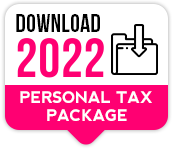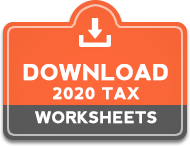
Tax Ticklers Edmonton
May 18, 2019
Invaluable Benefits of Corporate Life Insurance
September 1, 2019SPECIAL WORK SITE ALLOWANCE: Home Base Needed
In a January 29, 2019 Technical Interpretation, CRA discussed the criteria for tax-exempt allowances for board and lodging received for periods an employee was working at a special work site.
To be a special work site, the following criteria must be met:
- the work performed at the location must have been of a temporary nature;
- the employee must have maintained a self-contained domestic establishment (SCDE) elsewhere which was used as their principal place of residence;
- the SCDE must have been available to the employee throughout the entire time and not rented out to anyone else;
- the employee could not have been expected to return daily to the SCDE given the distance; and
- the work must have required the employee to be at the special work site for at least 36 hours.
In general, the employee must own or lease the SCDE and be responsible for its maintenance, alone or with other persons. However, a property that the employee neither owns nor leases may still be a SCDE if the employee pays expenses to, or for, the actual owner or tenant on a regular basis. Payments on a random or irregular basis in respect of the property would not be sufficient.
To exclude these allowances from income on the employee’s T4 slip, Form TD4 Declaration of Exemption – Employment at a Special Work Site should be completed and retained with the payroll records in case CRA would like to review it at a later date. Both the employer and employee have sections to complete in the Form.
ACTION ITEM: If planning to sell your residence because most of your time is spent at a special work site, note that your allowance may become taxable. To explore options, ensure to consult in advance.
REIMBURSEMENT FOR WORK CLOTHING: Taxable
In an April 17, 2019 Technical Interpretation, CRA was asked whether clothing reimbursements paid to maintenance employees were taxable benefits. Employees were not required to wear specific uniforms and were reimbursed based on receipts, to an annual maximum.
CRA referred to Guide T4130 Taxable Benefits and Allowances, which states that clothing is generally a personal expense, except where either of the following applies:
- the employee is required to wear a distinctive uniform while carrying out their employment duties; or
- by law, the employee has to wear protective clothing on the work site.
In the situation reviewed, CRA indicated that reimbursements for safety footwear would not be taxable; however, other reimbursements to compensate for increased wear and tear on clothing would be taxable.
Similar to clothing reimbursements, an employer’s direct provision of work clothing, that does not meet the criteria above, would be taxable.
According to CRA’s current guidance, a discount on merchandise provided to employees would not generally result in a taxable benefit unless the price is reduced to below the employer’s cost. In 2017, CRA had announced a change in its position such that discounts would be taxable as a result of a number of court decisions. However, due to public outcry, the Prime Minister subsequently announced that such discounts would not be taxable. CRA is currently reviewing their specific policy and has committed to provide guidance in light of the Prime Minister’s comments in the future.
ACTION ITEM: If providing work clothing, consider including distinctive visual markings such that it would be considered a uniform and therefore not subject to tax for the employee.
ZERO-EMISSION VEHICLES: Personal and Corporate Incentives
On April 17, 2019, Transport Canada released details on the purchase incentive of up to $5,000 for zero-emission vehicles as originally proposed in the 2019 Budget.
The incentive will apply to new purchases or leases on or after May 1, 2019. To receive the incentive, the manufacturer’s suggested retail price must be less than $45,000 for vehicles with six or fewer seats, while a vehicle with seven or more seats must have a suggested retail price of less than $55,000. Higher priced versions (trims) up to $55,000 (six or fewer seats) or $60,000 (seven or more seats) will also qualify. Delivery, freight and other fees, such as vehicle colour and add-on accessories, which push the actual purchase price over these limits will not result in the incentive being lost.
The full $5,000 incentive will be available for eligible battery electric, hydrogen fuel cell, or longer range plug-in hybrid vehicles (battery capacity of 15 kWh or more), while shorter range plug-in hybrid vehicles will be eligible for a $2,500 incentive.
Leases of 48 months or more qualify for the full incentive, with reduced amounts available for shorter leases. It will be reduced to 75% for a minimum 36-month lease, 50% for a minimum 24-month lease, or 25% for a minimum 12-month lease.
The purchase incentive will be applied at the point of sale (i.e. at dealerships or online) directly on the bill of sale or lease agreement of eligible vehicles.
The dealership is responsible for completing the documentation required to receive the incentive. Claims can be submitted through the Transport Canada online portal. Funding will be provided on a first-come, first-serve basis.
Individuals can only get one incentive per year. Businesses (including NPOs and provincial, territorial and municipal governments) can get up to ten incentives per year.
As an alternative to receiving the cash incentive, a temporary enhanced first-year capital cost allowance (CCA) rate of 100% may be claimed by those using the vehicle for income earning purposes. Specific restrictions and conditions apply. The deduction may be restricted to the first $55,000 in cost depending on the size, seating, and use of the vehicle.
ACTION ITEM: Review the Transport Canada website to determine if a future vehicle purchase would be eligible. The website includes a list of eligible vehicles and responses to frequently asked questions. https://www.tc.gc.ca/en/services/road/innovative-technologies/zero-emission-vehicles.html
ANXIETY, DEPRESSION & PHOBIAS: Disability Tax Credit
In an April 3, 2019 Tax Court of Canada case, at issue was whether the impact of an individual’s mental impairment entitled her to the disability tax credit (DTC). The taxpayer suffered from social anxiety, depression and phobias.
A taxpayer may be eligible for the DTC if the impairment(s) represents a marked restriction in the ability to perform a basic activity of daily living. In particular, the impairment must affect and permeate the individual’s life to the degree that they are unable to perform the mental functions that would enable them to function independently and with reasonable competence. This is to be examined in the context of:
- memory;
- adaptive functioning; and
- problem-solving, goal-setting and judgment (taken together).
Each of the three elements are to be considered separately.
Taxpayer wins
The Court found that although the taxpayer did not have trouble with memory, she did have a marked restriction with respect to the other two elements, either of which would qualify her for the DTC.
The Court noted that adaptive functioning was described in the explanatory notes to the legislation as abilities relating to self-care, health and safety, social skills, and common simple transactions. Also, the Court referred to a provincial government publication which described it as how well a person handles common demands in life and how independent they are compared to others of similar age. While the taxpayer was able to dress, bathe, feed herself, do her own laundry, manage her medications, and live on her own, these were all primarily done in a controlled environment (her apartment). In respect of social skills and common simple transactions, the taxpayer could not work except to a limited extent in the family business, avoided social interactions with all but family and close friends, and remained in her apartment as much as possible. She was heavily reliant on her mother for almost all external daily life functions. The Court determined that she had a marked restriction in respect of adaptive functioning.
In respect of the third element (problem-solving, goal-setting and judgment), it was noted that her anxiety resulted in what might be considered poor judgment. It led to avoidance, procrastination and withdrawal which in turn lead to failing school, loss of employment, self-harm activities, reluctance to pursue therapy, and taking on too many projects. While the Court noted that there was more uncertainty as to whether there was a marked restriction in respect of this element, it noted that the taxpayer should be given the benefit of the doubt, especially since mental illness can be invisible.
Since there was a marked restriction in at least one of the three elements, the Court determined that the taxpayer was eligible for the DTC.
ACTION ITEM: To determine if eligible for the DTC due to a mental condition, form T2201 should be reviewed with, and completed by, a medical doctor or psychologist.
WORKERS COMPENSATION: Replacement Payouts by Employer
In a March 29, 2019 Tax Court of Canada case, the taxpayer had been injured on the job and was held eligible for workers’ compensation (WC) payments by the relevant provincial authority. However, in accordance with the collective agreement setting out his terms of employment, he was paid 100% of his salary by his employer and, therefore, did not receive payments from the provincial WC authority. He argued that the maximum provincial WC should be included in income as WC and not as employment income. The distinction is important because an offsetting deduction is available for WC such that no tax must be paid.
Taxpayer wins
The taxpayer’s eligibility for the employer-paid compensation was determined under provincial law. As such, the Court found that the maximum WC benefits, 85% of his salary, were properly considered WC and, therefore, deductible from taxable income.
ACTION ITEM: If receiving full salary even after being injured, consider whether some of it could be classified as WC and therefore tax-free, even if not received directly from the provincial WC authority.
DEMAND FOR CLIENT INFORMATION: CRA’s Abilities
CRA uses third parties to get information about other taxpayers to ensure they are complying with their tax responsibilities. This could include obtaining information from a business about its employees, customers or suppliers, without needing to list their specific names. CRA has recently announced that they intend to continue and increase the use of these information gathering methods. In order to obtain such information without providing specific names, CRA must first obtain the authorization of a judge.
In an April 24, 2019 Federal Court case, CRA applied for judicial authorization to require the taxpayer, a roofing material supplier, to provide information about residential and commercial construction contractors who had an account with them. Specifically, CRA requested:
- the customers’ legal name, business or operating name, contact person, business address, postal code, and all telephone numbers on file;
- the customers’ business numbers, if known;
- the customers’ itemized transaction details including invoice date, invoice number, total sales amount, method of payment, and address of delivery; and
- all bank account information for the customer from credit applications and/or otherwise maintained by the taxpayer.
The information was sought for customers whose total annual purchase and/or billed amount was $20,000 or greater for the period January 1, 2015 to June 30, 2018. For January 1, 2018 to June 30, 2018, information on customers whose total annual purchase and/or billed amount was $10,000 or greater was to be provided.
The Court authorized the CRA to impose the information request on the taxpayer.
ACTION ITEM: CRA has indicated that they will make increased use of this ability to obtain information from one taxpayer about their customers. Consultation should be sought immediately if such a request is received.
TRACKING OF OWNERSHIP INFORMATION CHANGES: Canada Business Corporations Act
Over the past few years there has been much discussion at both the federal and provincial levels in respect of increased disclosure and tracking requirements of beneficial owners (those who may be considered owners even if not on title) of various types of property.
Recent changes to the Canada Business Corporations Act , which came into force on June 13, 2019, incorporated these discussions. The legislation sets out a criterion for identifying individuals who have significant control over a corporation and also requires certain corporations to keep a register of these individuals.
For these purposes an individual may have significant control over a corporation if the individual has any of the following interests or rights, or any combination of them, in respect of a significant number of shares (more than 25% of voting rights or value) of the corporation:
- the individual is the registered holder;
- the individual is the beneficial owner; or
- the individual has direct or indirect control or direction over.
A group of two or more individuals whose joint holdings meet these criteria are considered to be an individual with significant control.
Also, an individual who has any direct or indirect influence that, if exercised, would result in control in fact of the corporation, would be considered to have significant control. The legislation also provides that other prescribed situations may result in an individual having significant control.
Directors, shareholders and creditors of the corporation may, on application, be able to access the register.
Failure to comply with the requirements to maintain a registry may be subject to a $5,000 penalty. A director or corporation who “knowingly authorizes, permits or acquiesces” in not fulfilling this requirement or who provides false or misleading information in the registry may be subject to a fine of up to $200,000 and/or imprisonment of up to six months.
Similar requirements are currently being considered or enacted in respect of corporations governed by various provincial corporations acts.
ACTION ITEM: Consider whether your corporation is subject to this new requirement. If so, ensure that a proper register is being maintained.







